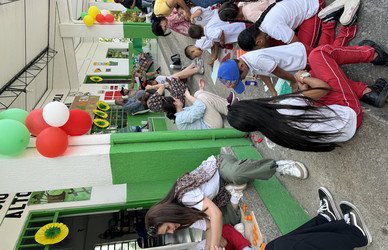Can you design patient safety?
The projects were created during a six-week course in welfare design in collaboration with Hospital Lillebælt. In order to design their products and services the third-year Industrial Design students used design methods of observation and user-involvement and had a close dialogue with patients and hospital staff. The goal was to create solutions for one or both groups that focus on improving patient safety.
A safe pill dispenser
One of the projects is by Alice Renaud who is an exchange student from l’Ecole Nationale Supérieure des Arts Décoratifs (ENSAD) in France. She has designed a pill dispenser, The Purpil, which is more usable and failure resistant than the hospital’s current solution.
Alice Renaud started out by trying to understand the function and meaning of the pill dispenser and also the problems linked to it.
- The pill dispenser is a fundamental item in any hospital. It is used every day and so it becomes part of the daily rhythm for a patient and works as a link between the patient and the nurses, Alice Renaud says.
However, the hospital’s current dispenser has some challenges for instance in terms of size, lack of space for a name sticker, and a difficult opening mechanism, which could cause you to accidentally mix the pills.
- Based on what I learned I was able to design a dispenser that incorporates product semantics, graphic design, haptics (touch feedback) and colour theory and so becomes more user-friendly and reduces the risk of error. A pill box or dispenser is not just a medical object, it's a link between people, it's a representation of the cure - not the disease, it's a positive object. And this is the message that The Purpil conveys, Alice Renaud explains.
A solution for midwives - and new mothers
One of the other solutions is a device for midwives designed by Ditte Marie Fog Ibsen. The device intends to reduce the ergonomic problems for midwives when they attempt to prevent a torn perineum, a common problem during first-births. The device simply reduces the hand and wrist strain for the midwife, benefitting the midwife and the mother who is giving birth.
Course lecturers: Richard Herriott and Peter Barker.



